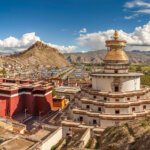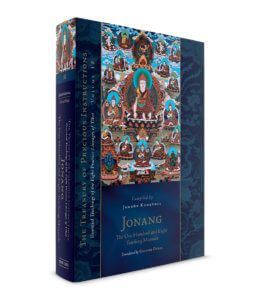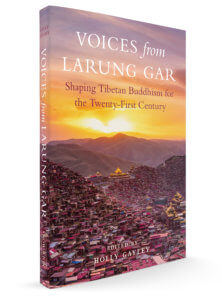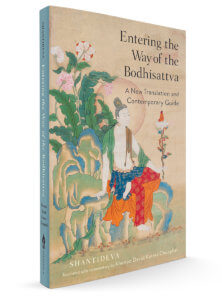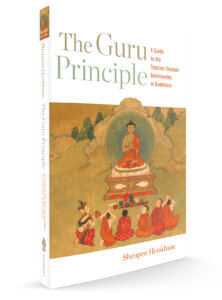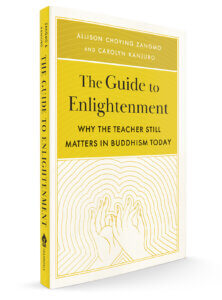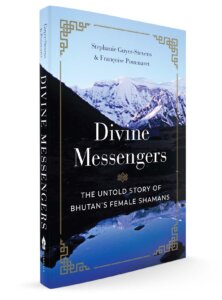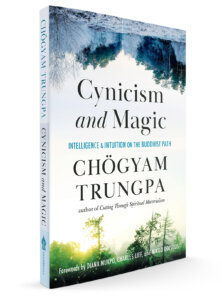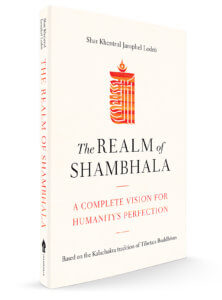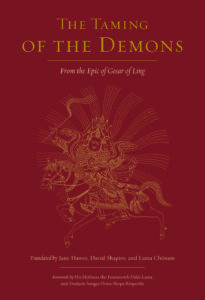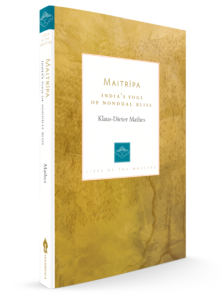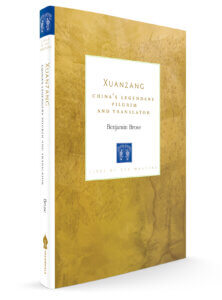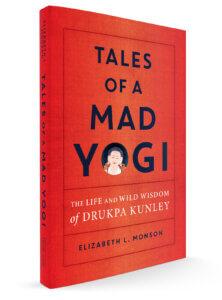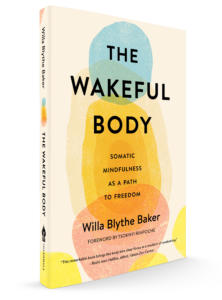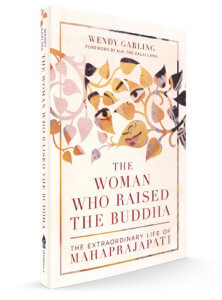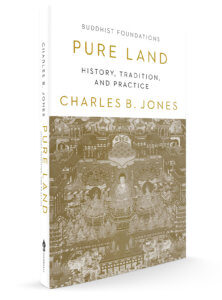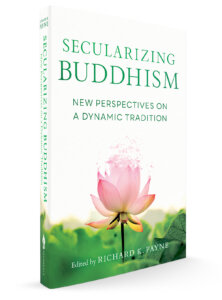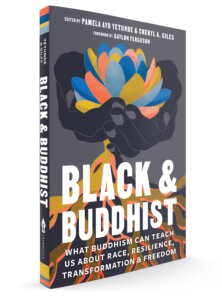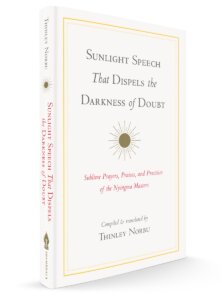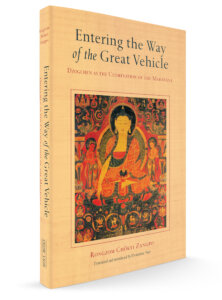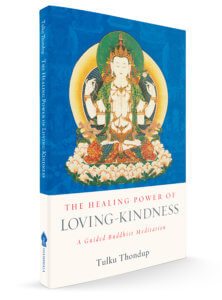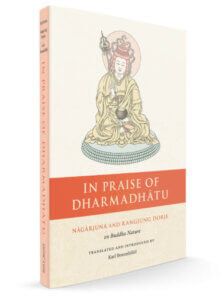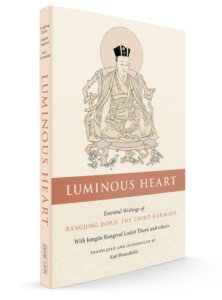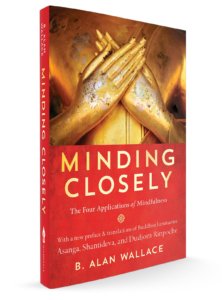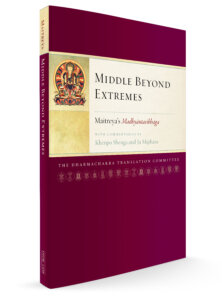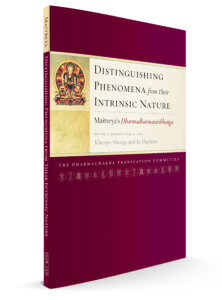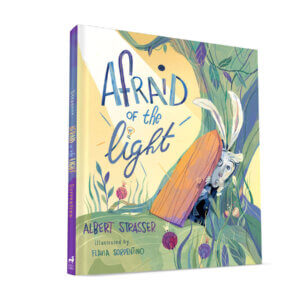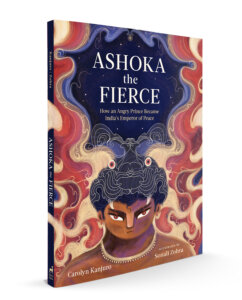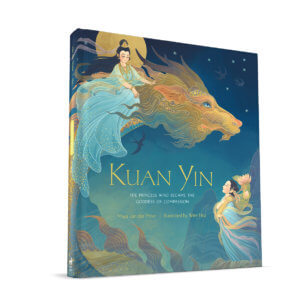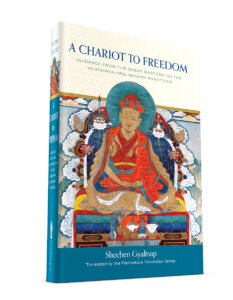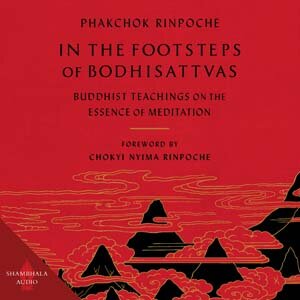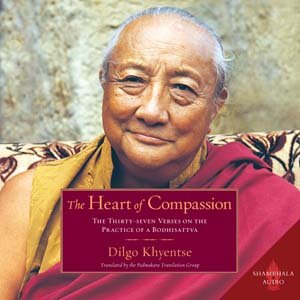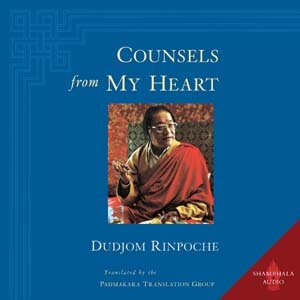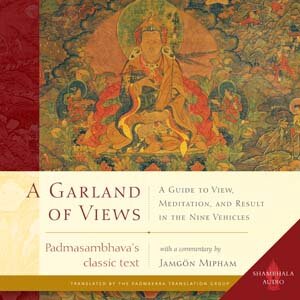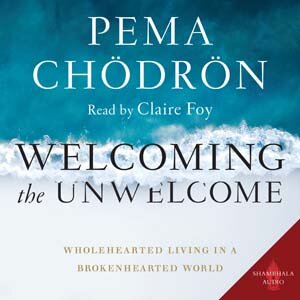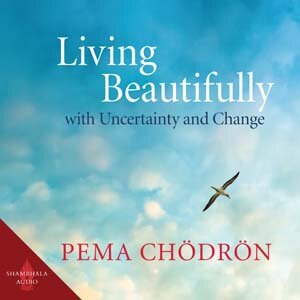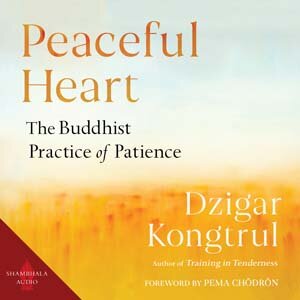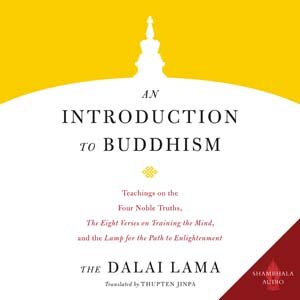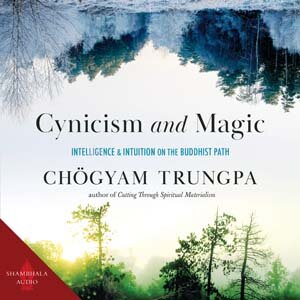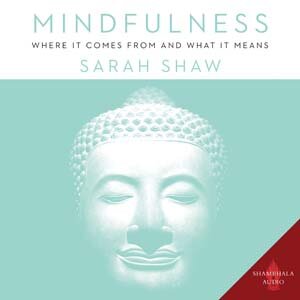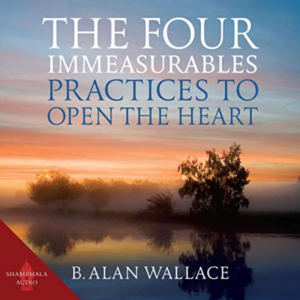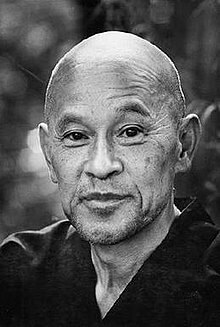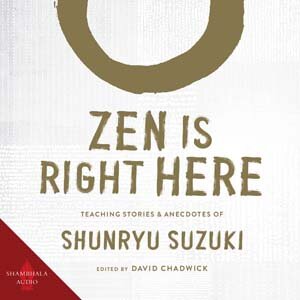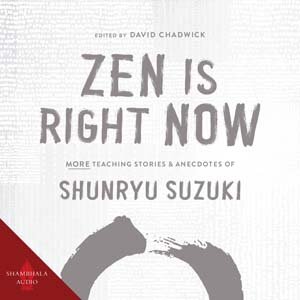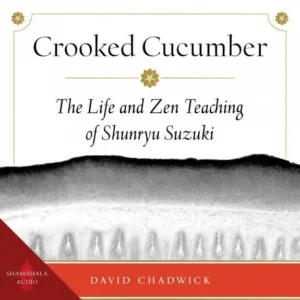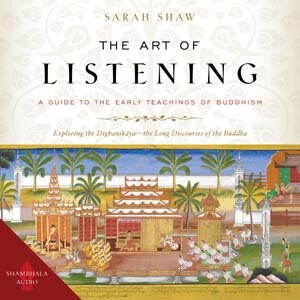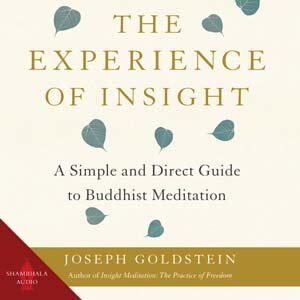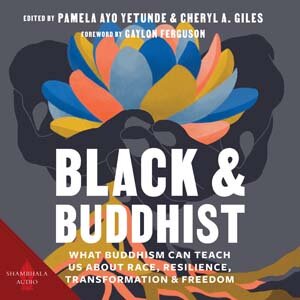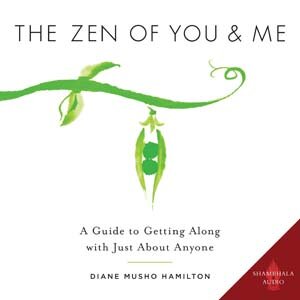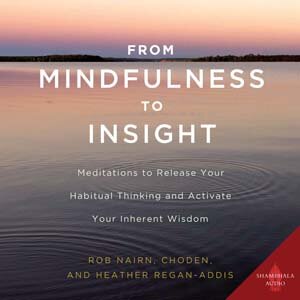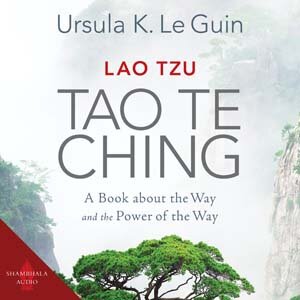See our other Year in Review Guides: Theravada/Pali/Insight | Chan, Zen, Mahayana | Tibetan Buddhism
We are very happy to share with you a look back at our 2021 books for those who practice in the Tibetan tradition.
Jump to: Reader Guides | Books | Books for Kids | Forthcoming Books | Audiobooks
In this volume, the latest in the Treasury of Precious Instructions, Kongtrul expands on The One Hundred and Eight Guidebooks, a collection of teaching manuals compiled by the sixteenth-century Tibetan master Kunga Drolchok, adding Indic source texts, Tibetan antecedents, and later interpretations. Though compiled by a Jonangpa abbot and transmitted by the Jonang tradition, these teaching manuals are actually drawn from the Kadam, Sakya, Kagyu, and, to a bit lesser extent, Nyingma traditions. They are succinct and impart practical wisdom, as transmitted by key figures like Kunga Chogdrub and Lowo Khenchen Sonam Lhundrub. Gyurme Dorje, the translator, provides extensive notes and helpful context throughout. The resulting volume preserves and integrates the diverse lineages of Tibetan Buddhism while providing useful advice to practitioners.
Voices from Larung Gar is the first collection of talks and writings by the leading voices of Larung Gar, the largest Buddhist institution on the Tibetan plateau. The book offers a compelling vision for Buddhism in the twenty-first century by some of the most erudite, creative, and influential Tibetan Buddhist luminaries today. In everyday language, these leaders delve into an array of contemporary issues, including science, ethics, gender equity, and animal welfare.
This collection features contributions from a range of prominent figures who are forging dynamic, modern paths forward for an ancient tradition. Included are the internationally renowned Khenpo Jigme Phuntsok, founder of Larung Gar, his distinguished successors Khenpos Sodargye and Tsultrim Lodro, and erudite nuns holding the scholarly title Khenmo, who are becoming known for their impressive publishing projects. Larung Gar is thus one of Tibetan Buddhism’s most vital communities, actively balancing cultural preservation and innovation.
For well over a millennium, Shantideva’s guide to the bodhisattva’s path has been revered and studied as a manual for becoming a bodhisattva, someone who is dedicated to achieving enlightenment in order to benefit all beings. In this fresh and poetic translation, Khenpo David Karma Choephel communicates the power of Shantideva’s insights through careful attention to both the meaning and the rhythmic pulse of each stanza. The translation is followed by a chapter-by-chapter guide, which provides necessary context and practical advice.
Based on over fifty years of personal experience as both a student and a teacher, Lama Shenpen Hookham writes candidly of the opportunities and challenges facing modern Dharma students who wish to study with a teacher. Traditional texts often do not reflect how the student-teacher relationship really works in practice, which leaves many pressing questions in communities taking root in the West. With honesty and clarity, Lama Shenpen discusses the roles of the teacher, practices related to the guru, and commonly asked questions she receives as a teacher. This handbook is the first of its kind, breaking down in a pragmatic and relatable way everything one needs to know to enter a student-teacher relationship with open eyes and an open heart.
In this intimate collection of personal stories and advice, Allison Choying Zangmo and Carolyn Kanjuro team up to reflect on their experiences as lifelong practitioners of Buddhism, their own relationships with their partners who are also their spiritual guides, and the transformative power of the student-teacher relationship. As both students and leaders in their Buddhist communities, Allison and Carolyn possess clear insights into how we can successfully interpret traditional Buddhist understandings of spiritual mentorship for today’s world.
As mystics, healers, and travelers to the netherworld, female shamans continue to impact the spiritual lives of the Bhutanese. These divine messengers act as mediums for local spirits, cure diseases through prayer, and travel to the realm of the dead. They are sometimes referred to as “sky-goers,” “reincarnations,” or “returners from the beyond,” and their stories are intimately connected with the Buddhist ideas of karma and rebirth.
Journalist Stephanie Guyer-Stevens and anthropologist Françoise Pommaret traveled to the Himalayas to meet seven living Bhutanese female shamans and to help make their stories known. Stephanie and Françoise offer an intimate narrative of these shamans’ spiritual experiences and important roles in society. This book also provides an overview of the history of this tradition and a translation of an autobiography of the famous eighteenth-century divine messenger, Sangay Choezom. This insightful and sensitive account is a rare look inside the world of these brave women.
Based on a series of talks given by Chögyam Trungpa during the first session of what was to become Naropa University, Cynicism and Magic introduces key Tibetan Buddhist concepts, including karma, the structure of ego, the paramitas, and the bodhisattva. Employing a unique and intimate teaching style, Trungpa Rinpoche presents these concepts in a larger framework of questions we all have: What is authentic spirituality? Can I find enlightenment and freedom? How should I approach life, death, suffering, and boredom? How can I develop some discipline, patience, and sanity? Through these accessible teachings, this book will show you how to approach a living dharma with intelligence, and with a sense of openness and wonder.
Audiobook read by musician Devendra Banhart.
A comprehensive account of Shambhala according to the Jonang school of Tibetan Buddhism.
The Realm of Shambhala presents the Kalachakra Tantra’s multilayered approach to Shambhala as taught by the Tibetan Buddhist Jonang tradition. Understood to be an ancient kingdom and physical place, Shambhala is also taught to be an exalted state of mind attainable by all through practice. Through cultivating peace and extending it into harmonious relationships with others, the transformative power of Shambhala can enter everyday life. This book details the tradition’s perspective on the origins of Kalachakra literature and includes extensive lineage narratives of Jonang masters who have upheld this tradition in India and Tibet.
Khentrul Rinpoche joins practical teachings with a vision for humanity rooted in ancient prophecy. The Kalachakra Tantra foresees a golden age, when the individual peace attained through Kalachakra practice spreads to humankind as a whole. The Realm of Shambhala lays out a vision for how we can cultivate an unbiased mind, overcome our collective afflictions, and usher in an era of perfect peace.
The Epic of Gesar of Ling has been the national treasure of Tibet for almost a thousand years. An open canon of tales about a superhuman warrior-king, the epic is still a living oral tradition, included in UNESCO’s Representative List of the Intangible Cultural Heritage of Humanity. Available for the first time in English translation, The Taming of the Demons is the fourth volume among the hundreds available in the Tibetan original, which were crafted by the bards to be enjoyed in any order.
Popularly read as an allegory and rich with ethical proverbs, this volume recounts stories of Gesar fending off demons and liberating his foes as an enlightened leader. While the first three volumes cover Gesar’s birth, youth, and rise to power, this volume recounts the martial victories and magical feats that made him a legendary figure in Tibet and beyond.
Maitripa (986–1063) is one of the greatest and most influential Indian yogis of Vajrayana Buddhism. The legacy of his thought and meditation instructions have had a profound impact on Buddhism in India and Tibet, and several important contemporary practice lineages continue to rely on his teachings.
Early in his life, Maitripa gained renown as a monk and scholar, but it was only after he left his monastery and wandered throughout India as a yogi that he had a direct experience of nonconceptual realization. Once Maitripa awakened to this nondual nature of reality, he was able to harmonize the scholastic teachings of Buddhist philosophy with esoteric meditation instructions. This is reflected in his writings that are renowned for evoking a meditative state in those who have trained appropriately. He eventually became the teacher of many well-known accomplished masters, including Padampa Sangyé and the translator Marpa, who brought his teachings to Tibet.
Drawing on Maitripa’s autobiographical writings and literary work, this book is the first comprehensive portrait of the life and teachings of this influential Buddhist master. Klaus-Dieter Mathes also offers the first complete English translation of his teachings on nonconceptual realization, which is the foundation of Mahamudra meditation.
While not specifically on Tibetan Buddhism, its hard to imagine anyone visiting this page who not delight in this extraordinary figure.
In the fall of 629, Xuanzang (600–662), a twenty-nine-year-old Buddhist monk, left the capital of China to begin an epic pilgrimage across the country, through the deserts of Central Asia, and into India. His goal was to locate and study authentic Buddhist doctrine and practice, then bring the true teachings back to his homeland. Over the course of nearly seventeen years, he walked thousands of miles and visited hundreds of Buddhist monasteries and monuments. He studied with the leading teachers of his day and compiled a written account of his travels that remains a priceless record of premodern Indian history, religion, and culture. When Xuanzang finally returned to China in 645, he brought with him a treasure trove of new texts, relics, and icons. This transmission of Indian Buddhist teachings to China, made possible by Xuanzang’s unparalleled vision and erudition, was a landmark moment in the history of East Asian Buddhism.
As with many great pre-modern religious figures, the legends surrounding Xuanzang’s life have taken on lives of their own. His story has been retold, reshaped, and repurposed by generations of monastics and laypeople. In this comprehensive and engaging account, Benjamin Brose charts a course between the earliest, most reliable accounts of Xuanzang’s biography and the fantastic legends that later developed, such as those in the classic Chinese novel Journey to the West. Xuanzang remains one of the most consequential monks in the rich history of Buddhism in East Asia. This book is an indispensable introduction to his extraordinary life and enduring legacies.
The fifteenth-century Himalayan saint Drukpa Kunley is a beloved figure throughout Tibet, Bhutan, and Nepal, known both for his profound mastery of Buddhist practice as well as his highly unconventional and often humorous behavior. Ever the proverbial trickster and “crazy wisdom” yogi, his outward appearance and conduct of carousing, philandering, and breaking social norms is understood to be a means to rouse ordinary people out of habitual ways of thinking that leads them toward spiritual awakening.
Elizabeth Monson has spent decades traveling throughout the Himalayas, retracing Drukpa Kunley’s steps and translating his works. In this creative telling, she has reimagined his life based on historical accounts, autobiographical sketches, folktales, and first-hand ethnographic research. The result, with flourishes of magical encounters and references to his superhuman capacities, is a poignant narrative of Kunley’s life, revealing to the reader the quintessential example of the capacity of Buddhism to skillfully bring people to liberation.
Tap into the wisdom of the body with down-to-earth practices that allow the body to become the source of mindfulness. Lama Willa Blythe Baker introduces meditation practice as the cultivation of a way of being rather than a way of doing. It is a way of being that is self-aware, self-compassionate, and embodied. This way of being is not limited to practice on the cushion or on the yoga mat—somatic mindfulness is available at any moment, activated by attention to the body’s wisdom and its teachings.
Mahaprajapati was the only mother the Buddha ever knew. His birth mother, Maya, died shortly after childbirth, and her sister Mahaprajapati took the infant to her breast, nurturing and raising him into adulthood. In this first full biography of Mahaprajapati, Wendy Garling presents her life story, with attention to her early years as sister, queen, matriarch, and mother, as well as her later years as a nun. Garling reveals just how exceptional Mahaprajapati’s role was as leader of the first generation of Buddhist women, helping the Buddha establish an equal community of lay and monastic women and men. Mother to the Buddha, mother to early Buddhist women, mother to the Buddhist faith, Mahaprajapati’s journey is finally presented as one interwoven with the founding of Buddhism.
With the release ofleading scholar Charls B. Jones' Pure Land: History, Tradition, and Practice we finally have an engaging, accessible, and surprising account of the traidtions or Pure Land Buddhism, which has more adherents than any other Buddhist tradition.
Until now, this these traditions have been poorly understood in the West. This is the case despite Pure Land teachings being well integrated throughout history with Chan and its Japanese counterpart Zen, as well as embedded in Tibetan Buddhist practice. Centered on faith, devotion, and prayer to Buddha Amitābha, Pure Land constitutes its own tradition that continues to grow in popularity throughout the world.
This concise introduction presents at last a complete and accessible guide to Pure Land thought and practice that will surprise and delight readers in its richness and scope. The author traces its history beginning from its development in India through China and Japan up to the present day. This overview goes on to cover the core principles of Pure Land centered on the belief that prayer and contemplation on Buddha Amitābha can lead to rebirth in a realm free from suffering that is ideal for progress on the path to enlightenment.
Secularizing Buddhism: New Perspectives on a Dynamic Tradition is a very engaging and provocative essay collection that explores the opposing ideas that often define Buddhist communities—secular versus religious, modern versus traditional, Western versus Eastern—are unpacked and critically examined. While many cover topics that span all the Buddhist traditions, the two of most interest to East Asian Buddhists are:
- Philippe Turenne: Buddhism without a View - A Friendly Conversation with Stephen Batchelor’s Secular Buddhism
- Charles Jones: Establishing the Pure Land in the Human Realm
- Roger Jackson: Avoiding Rebirth: Modern Buddhist Views on Past and Future Lives
Black and Buddhist: What Buddhism Can Teach Us about Race, Resilience, Transformation, and Freedom includes several contributions from teachers and practitioners of the Tibetan tradition like:
- Lama Dawa Tharchin Phillips
- Lama Rod Owens
New in Paperback
Forthcoming in 2022
And we have even more from the Chan and Zen traditions coming out next year from the likes of Longchenpa, Thinley Norbu Rinpoche, Garchen Rinpoche, Khandro Rinpoche, Phakchok Rinpoche, Jamgon Kongtrul, Pema Chodron, Roger Jackson, Alan Wallace, and many more. So make sure you sign up for our emails so you do not miss them! Here is a sneak peek at January's release which you can pre-order now and take advantage of the discount.
A Chariot to Freedom is one of the most beloved presentations of the preliminary practices, or ngöndro, that form the foundation of the Vajrayana Buddhist path. This set of practices, common to all schools of Himalayan Buddhism, is what nearly every practitioner begins with, yet it also constitutes a complete method in and of itself. Although the preliminary practices are considered a prerequisite for further teachings and initiations into other practices, many of even the most accomplished masters continue to engage in them every day.
Most of the other excellent works on these foundational techniques are specific to a particular tradition, but this text is widely considered to be exemplary, in part, because it is applicable to all traditions of ngondro. Drawing from the original words of the Buddha in the sutras and from later treatises by such masters as Nagarjuna, Shantideva, and Guru Padmasambhava, Shechen Gyaltsap’s commentary is a wonderfully curated anthology of Buddhist teachings on the preliminary practices of Vajrayana Buddhism. It covers the thoughts that turn one’s mind away from ordinary pursuits and toward enlightenment, taking refuge, arousing the mind set on enlightenment (bodhichitta), purification, mandala offering, and Guru Yoga.
Shechen Gyaltsap explains why each practice is beneficial and provides profound and eminently useful guidance for practitioners, while simultaneously transmitting the wisdom of generations of Buddhist masters.

